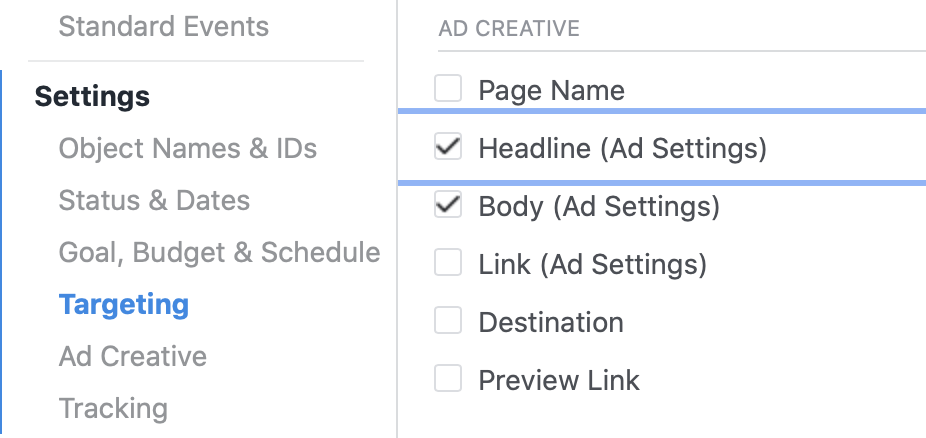By: Tom Murray | Managing Director
Since Facebook started taking over the digital advertising game, the way to win the game has almost always been based on the creatives that brands were able to put out. The best ads typically won out, driving high conversions and low acquisition costs. This was typically a very manual and tedious task, having to create each variation one-by-one in the platform. For those that new bulk sheets, you could save some time with some fancy excel work.
It was until dynamic creative optimization (DCO) rolled out in 2018 that advertisers were finally able to launch multiple body text, headlines, and image/video assets all in the same ad, without having to make tens, if not hundreds of ads. DCO was great because you could put in up to 5 headlines, 5 body text, 10 images/videos, 5 descriptions, and 5 CTA buttons, for a grand total of 6,250 possible combinations.
DCO is a bit inflexible though. You have to check that off at an ad set level - like the below in order to use it.

Once you check this box, you can only have 1 ad in a DCO ad set, often times meaning that to use DCO, you would need to create multiple ad sets in order to test more creatives out. This however goes against the algorithm, as splitting data into more ad sets limits the learning potential of a given ad set, so DCO was unreliable and could be fairly unstable.
Facebook finally got the memo in late 2019, rolling out dynamic responsive ads that allow advertisers to run dynamic creatives in a normal ad set, with other non-dynamic ads. This solves the issue of the algorithm, because now you could have multiple dynamic ads under the same ad set, without needing to split them out.
The parameters for these responsive ads are similar to DCO, in that you can put in up to 5 body text, headline, and descriptions. This does not allow for multiple CTA buttons or assets, but it creates an easy way to test different text options for your ads. Here is what it looks like in the platform:
To view the performance of these breakouts, you can look at some new columns in Ads Manager that allow you to see text and body as individual columns.

From there though, you’ll still need to export this to excel and do some pivot table work to get performance by body text or headline. So it isn’t a perfectly seamless experience yet, but they are making strides, where by 2020, it would be expected that you could run a dynamic or non-dynamic ad across all parameters of an ad, while being able to seamlessly report on any of the individual elements of your ads.
